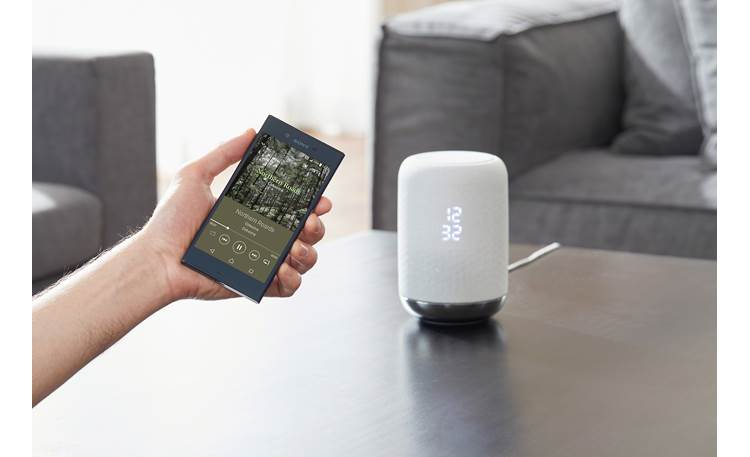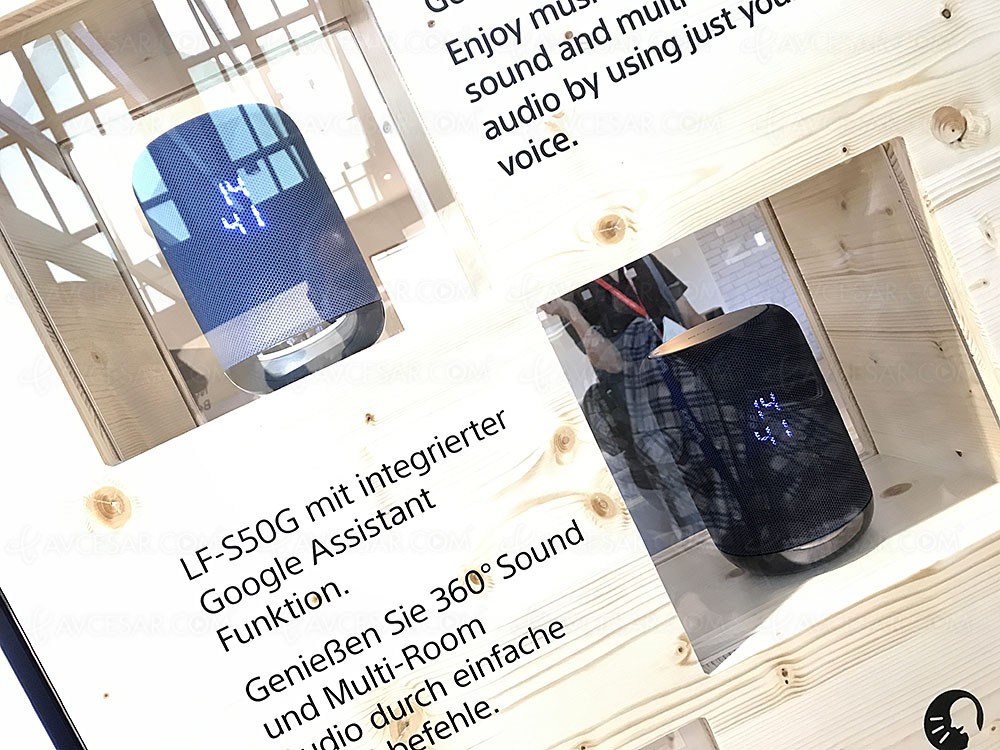Table of Content
The only physical buttons on the LF-S50G are around back. There you'll find options for Bluetooth and turning off the microphone on either side of the power jack, on that shiny silver base. It's nice that Bluetooth is there, but I only ever used it to make sure it works.

If you can live without making calls through your smart speaker, the LF-S50G is a better choice than the Google Home. But if sound quality matters, Onkyo's Smart Speaker G3 or JBL's Link 20 both offer better bass and overall fidelity for the same price. Through the Google Home app you can connect the LF-S50G to other Google Assistant speakers for multiroom playback. But there is no way to adjust the bass or treble levels, and, like other Google Assistant speakers, the Sony lacks automated room correction.
Win a smart pet feeder and water fountain from Tech4Pets
Unfortunately the Sony LF-S50G doesn’t have an aux jack. The only way to listen to music on this speaker is either through voice commands, if you cast it, or over bluetooth. And theres also an NFC touchpoint so if you have an android device pairing is a little easier. Personally one of my biggest grips with the google home, home mini, and home max is that you cant physically control your music playback, google forces you to use voice commands.
Using the Google Assistant AI, this speaker offers the same core functionality of the Google Home device, with a different design and some additional motion-based controls. Its starting price is about $200, which is a bit high for the sound quality it offers compared to the Sonos One. However, if it is on sale it is a good opportunity to take Google Assistant to some corner of your home. The clock isn't exactly futuristic, but really useful. You can set it to recognize other people's commands or only those coming from your own voice. In either case the recognition is very good, unless the volume of the device is so high that it cannot hear us.
Sound
One design element that's kind of unique to the LF-S50G is a clock on the front. The stacked numerals may not be your first preference for a timepiece, but at least you don't have to ask out loud for the time. It's not a necessity, but it's a nice touch, and for me it meant having the option of using the speaker as a true alarm clock. The LF-S50G is IPX-3 water resistant, another nice feature that most smart speakers lack. That means it can get splashed without fear of it frying its circuits — handy if you plan to place the unit in the kitchen. I ran it under a faucet for a few seconds and the unit continued to work without issue.
The voice element is as effective here as on the standardGoogle Home and the littleGoogle Home Mini. I experienced little delay in response, and I rarely had to repeat myself. While there’s no unique selling point, you do get a great combination of neat ideas. Not all of them are flawlessly implemented, but this is a significant upgrade over the standard Google Home. Thankfully the LF-S50G’s built-in mic seems to happily pick up a call of ‘OK Google’ from a decent distance away, so you shouldn’t have to speak up to issue commands. I just reconnected my S50G a few days ago, after many months of not using it.
Speaker Type
You can also cast from other music applications or podcasts, even if they're not recognized by the Google Home application. In comparison, that sounds a lot more solid and authoritative, yet is smooth enough in its delivery that I could listen for hours on end. Overall, the Sony LF-S50G’s sound is perfectly acceptable for short listens while making dinner – but it falls short of Sony’s generally high audio standards that keep you listening. There’s a healthy amount of bass, but it’s controlled enough not to come across all muddy. The top end is clear, but maybe it’s a little too crispy, and the midrange feels a little hollow.

Usually when using a third party google assistant smart speaker it means not having all of the features found the the google home, home mini, and max. Broadcasting works just fine on this Sony speaker, but you cant make phone calls like you can with either of the first party speakers. This feature could possibly come in a feature software update. While Sony's smart speaker does sound better than some other Alexa and Google Assistant devices, Sonos is still tops in terms of audio quality. Sure, the Sonos One works only with Alexa right now, but when the speaker debuted, the company promised that support for Google Assistant was on the way.
Sony LF-S50G design and build quality
The base is quite thin with reflections and has non-slip rubber underneath. You may try to resist but smart speakers will conquer your home. Sony is placing a serious bet to fill every corner of your home with music, especially places where there are usually liquids.

It’s IPX3 rated, meaning it survive a few splashes with little worry – and the removable cover is completely washable. Still, this fabric-covered smart speaker is quite the looker. Hidden underneath its mesh exterior lies a distinct LED screen, setting it apart from its contemporaries. This display is used to display the time, view alarms, volume counter etc but, if you’d rather not have it on show it can be completely turned off.
The Sony LF-S50G features remarkably good voice recognition. The speaker had no problem hearing our voice commands across the room and we never found ourselves shouting, save for when music is playing loudly. For music, the speaker gets incredibly loud for its size and will have no problem filling a medium sized room with music.
If audio quality isn't your primary concern, the second-gen Echo and regular Google Home are both cheaper than the LF-S50G, at $100 and $129, respectively. As I mentioned before, Sony does a respectable job here with audio, and is noticeably better than the base-model Echo and Google Home. If you're after something that sounds better, you'll be glad you spent the extra money on an LF-S50G or Sonos One.
I’m a really big fan of the google home mini, I’m also a really big fan of the google home max… but I’m not the biggest fan go the original google home. But if you want a mid sized smart speaker, I really think the Sony LF-S50G is an awesome alternative to the Google Home. But what really sets Sony’s speaker apart from the crowd is its use of smart gesture controls. For instance, by tracing a circle in the air over the top of the speaker with your finger you’ll adjust the volume. Swiping your palm over the top changes the audio track you’re listening to and it also has automated volume control, adjusting sound levels to your environment. Since voice control is what makes the LF-S50G more than just another connected speaker from Sony, that key selling point has to work well.

First, it can be difficult to get them to work on the first attempt. I often found myself doing the same movement three or four times before the speaker got the hint. Now lets talk about the gesture controls cause those can be very hit or miss if they’re not properly built into the product.

No comments:
Post a Comment